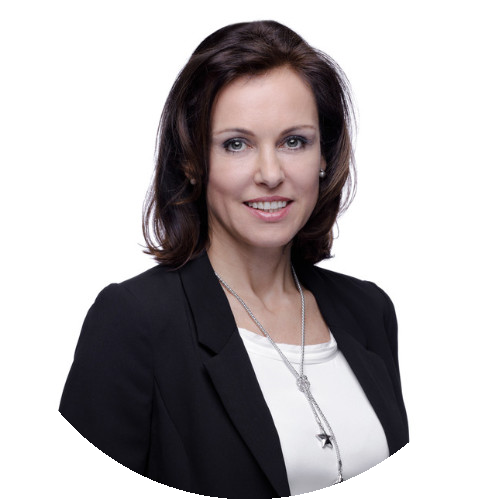Eva Ayberk is an international expert and consultant for organizational design and supports leaders, teams and organizations in their development. She is a successful author and – as we think – a fantastic partner for all surfers of the digitalization and those, who want to become one.
Her work moves individuals, teams and organizations to move themselves. She just arrived in the MDI network – the perfect reason for us to go into dialog with her: She talks about the requirements and strategies for successful leadership development, coaching nowadays and her very personal experiences, tipps, tricks and learnings for successful leading while facing disruption.
We live in a dynamic, fast moving and changing world. Digitalization has already hit almost all areas of our life. How do leaders have to act in order to not get swept away by the digital disruption?
The knowledge that leading and steering companies is changing is a very essential first step. Acting according to this means to not transform oneself to a bottleneck through strict control and reporting. A system for leading and steering has to be developed that enables us to make quick decisions and to adapt quickly to changes. With that also comes the development of employees and teams towards more personal responsibility. Leadership can be spread more evenly this way. We need a strong picture of the future to not get lost in arbitrariness. Where do we want to go and why? These are the questions every leader has to ask himself. The answers to these questions will help to get orientation in a fast moving world.
Which personal traits do trainers and coaches have to have to accompany their coachees successfully in the digital transformation?
I would say, the willingness to perform self-reflection and openness for new developments are very important traits for trainers and coaches. From time to time, it is important for them to ask themselves, if their way of working still is up to date. They should know digitalization not only theoretically through books, but also practically through dealing with it. They do not have to become techies. Still, they have to understand the dynamics that come with the digitalization and how it feels to deal with it.
And in the leadership development: What leads to success here?
We as leaders are today more than ever challenged to question old patterns of thinking and acting. That requires room for irritation and reflection. It also leads away from content-stuffed and almost schoolish standard trainings. In my opinion, successful training nowadays needs mainly simulation, reflection and intensive feedback from the trainers as well as the group you are learning with.
As a second step, the learning methods matter a lot. Modern methods give leaders the opportunity to take changes actively in their practical work and to directly try them out and implement them. Method and application competence comes for a great part from trying things out. Trainings can also be a little bit like working in a laboratory. Like in a lab, you get the chance to experiment, fail and draw conclusions from it. The times of wellness-trainings with happysheets at the end are long gone in my opinion. You have to leave your comfort zone in order to realize how much you can grow and learn. Of course, fun is still allowed. 🙂
So, what can trainers and coaches do precisely to support this?
From my point of view, it is crucial that consultants, trainers and coaches use the chance to network and work together. Currently, in IT and development areas new styles of leadership are evolving because the ways of working there are changing intensively. But the need for this is also strong in other industries. Therefore, you have to look for whats already here, what could be useful and to enhance already existing parts. That works best when working cross-functional.
What are possible risks of agility in leadership?
One risk is to bring agile leadership as a quick fix into an organization. Ideally, agile leadership is used on various levels: it needs know-how, application competence and mindset – short: knowing-doing-being.
Another risk is wanting to copy an apparently successful agile way of other companies. It would be much better to first take a look at your own situation and then to identify the most important fields of action.
Sometimes, I also observe that people forget hoe they pistired their future: Why do I even need agility (regarding leadership) and how do we imgine our ideal future, if we work and act in an agile way? You need these principles to bring sense and energy into the implementation. Only then, people can deal with challenges in the daily business in a proper way. A detour is not a problem, as long as you don’t lose sight of the right direction.

Since we are already talking about practical tips: How do you implement digital technologies in your workshops and trainings?
I use many different methods in consulting, my workshops and trainings. A great guideline is: A digital tool must never be a means for itself but always a means to an end. The question: “What should be achieved with this?” is important. For me, it’s not about using a cool gadget, it’s about the result that should be archived with it.
Do you have an example?
Yes sure – I use an adaptive expertsystem to evaluate potentials. This is a cloud based solution that makes it possible to get a valid picture of leadership potentials in a short time. These information go directly into the consulting, workshop and coaching processes. With this interaction, the participants are involved right from the beginning, which leads to a higher acceptance and openness.
Now let’s take a look into the future: What big challenges await us?
One of the biggest challenges is in my opinion the orientation of the Human Resource function. The HR development has to adapt to the new requirements changing business models bring with them. The people in charge for HR are grasping many new content pieces from digitalization, agility and innovation. Still, their own role and the HR instruments are not evaluated enough in my opinion. That also applies to leadership development. As mentioned above, new learning methods are required which also support experimentation and irritation. That needs a whole lot of boldness and persuasion-abilities towards the management. Too often, I still see that people invest in known things rather than risking trying out something new. In the long run, no organization can nowadays afford to not keep their leaders and key-people up to date when it comes to executing leadership.
On the other hand, it also needs consultants. As I said before, in the next few years there will be the need for a new form of consulting and development in the area of leadership. More of what has already been just updated with a digital and agile look won’t be enough.
Let’s talk about yourself: Originally you started in the finance and marketing sector. What lead you to your specialization in leadership development?

In both functions I had the chance to design big changes in companies. I was very much affected by the realization that humans and organizations cannot be changed by solely pressing a button, that culture can only be influenced indirectly and that leadership can act as a multiplier, as well a preventer. My curiosity to explore the dynamics behind all that was so big that I decided to shift my professional focus in this direction. That’s where this journey started and it still is very exciting up to this day and offers great joy for me day by day. And of course, my finance and marketing background still is very useful for me as a businesswoman. 🙂
Since you yourself are a foundress and successful businesswoman: What is crucial for you when it comes to leading your employees?
For me, being a leader means to create opportunities – that’s what I remind myself of every time. I want to create a surrounding that offers space for a common vision and joy to work on it. That’s not always easy during everyday work. That’s why leading also means to show endurance, to accept detours and to foster learning opportunities by oneself and others.
Now you got us interested: How would you describe your leadership style?
I think my leadership style is mainly affected by the thought that humans act self-responsible and self-determined. For a common goal you always need a clear understanding of the mutual expectations. Openness, transparency and trust are crucial for me and I try to live by that and make it stronger. Based on this, I work on my leadership practice every day.
What would you recommend a leader who’s right at the beginning of his agile journey through the digitalization?
Please, do not listen to gurus and prophets who promote an agile paradise. Preferably, use your common sense to face your personal challenges and deal with agility in a different way to understand the sense and risks of it. Then, explore step by step the implementation areas in your own business.
In your training activities you do not only meet leaders but also students at the university of applied sciences: how do you prepare them for their professional future?
I am convinced that students already need an opportunity now to experience their professional future and not only hear or learn in a theoretic way about it. That’s why I try to make space for learning by experiencing something in my lectures, for example through simulations. At first, the students are a bit irritated because most of them have not experience this way of learning so far. But then their curiosity wins, and it is amazing to see how they explore their potentials. I also directly motivate them to take their future in their hands. The generation that is in education right now not only determines their own future but also the future of the organizations. We need people who are willing to think critically and to shape the future. As lector it is my wish to accompany young adults on this way and to support them. At the same time I also profit through this intensive exchange. That’s what I call co-creative development.

